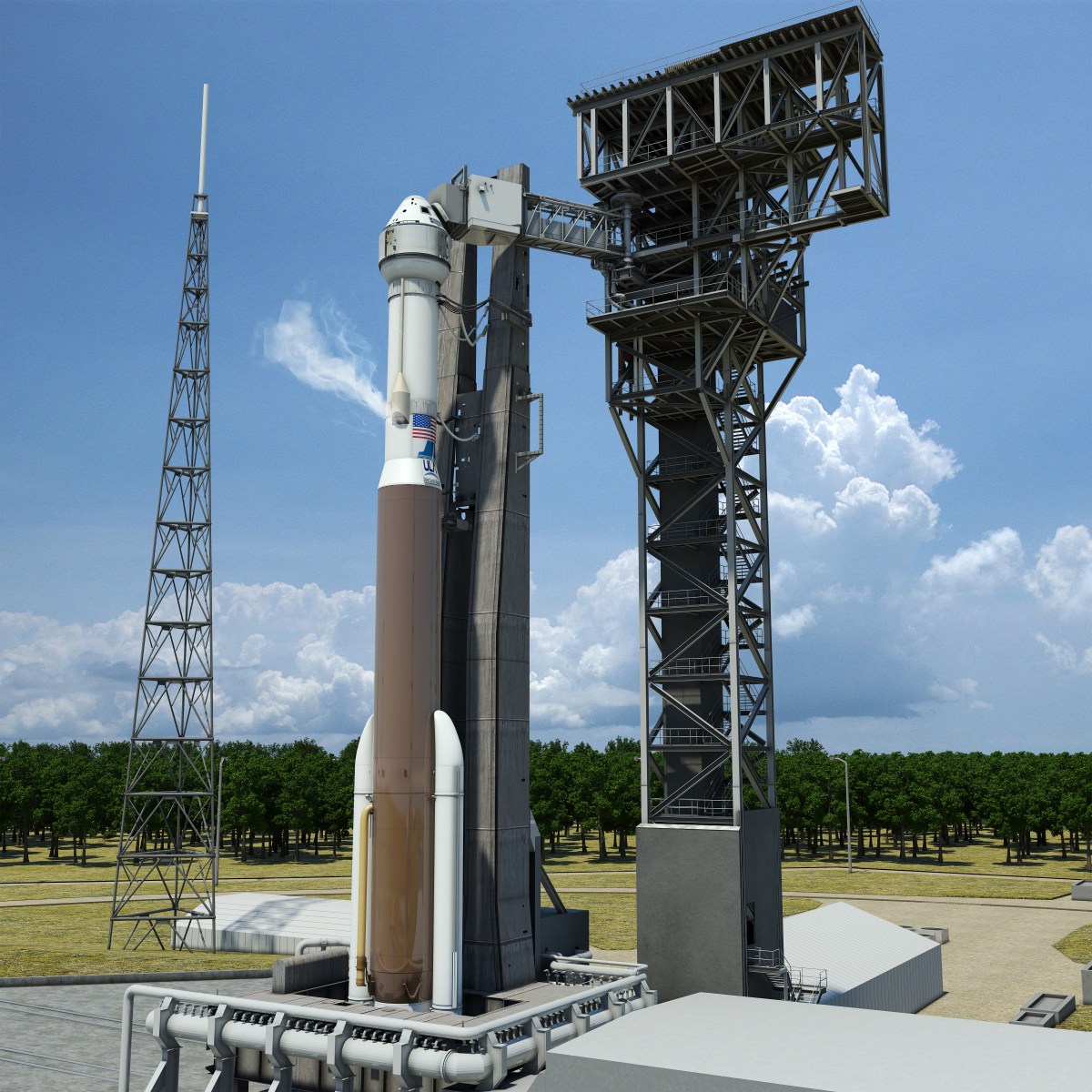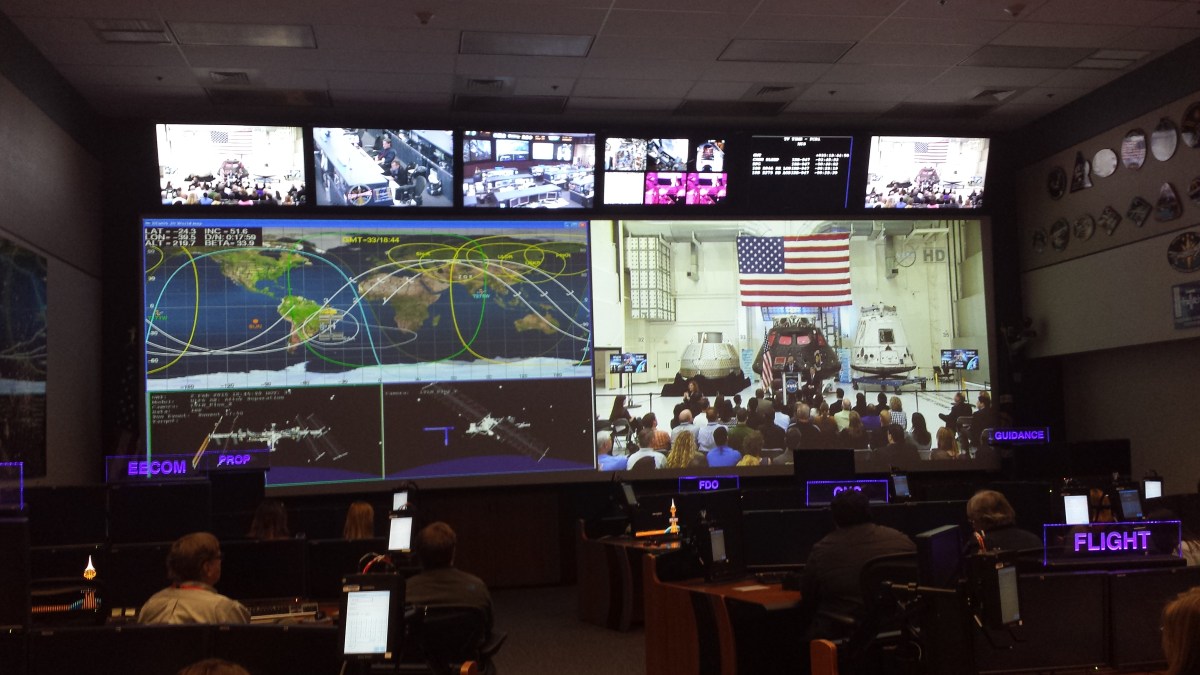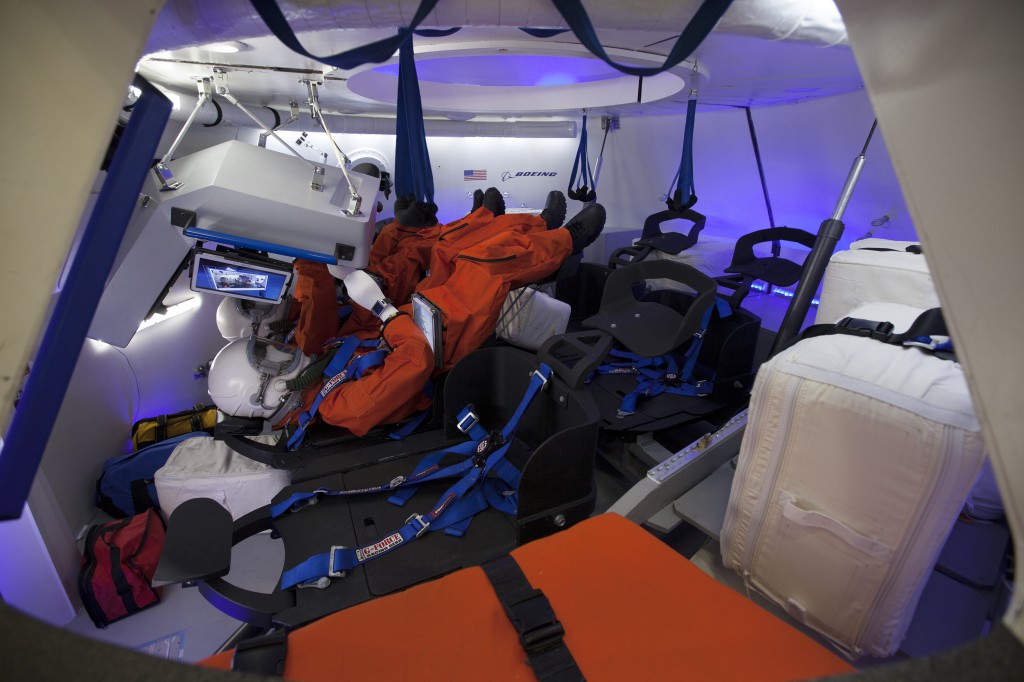Category: NASA Astronauts
Spacewalks to Prep Station for Commercial Crew Spacecraft
A set of three spacewalks by astronauts on the International Space Station will focus on preparing the orbiting laboratory for the arrival in coming years of spacecraft under development by partners of NASA’s Commercial Crew Program. Astronauts Barry Whitmore and Terry Virts will perform the extravehicular activities, or EVAs, on Saturday, Wednesday and Sunday, March 1. The spacewalkers will prepare two of the ports on the station to receive two docking adapters that are compatible with the hatches of Boeing’s CST-100 and the SpaceX Crew Dragon. Those two spacecraft are scheduled to be built and flight-tested then certified in 2017 leading up to operational missions to take astronauts to the station. Boeing built the adapters, and a cargo-only version of the SpaceX Dragon will be used to take them to the station later this year.
In addition to regaining America’s ability to launch astronauts to the station from U.S. soil, the new spacecraft will expand the crew of the station to seven people, which will double the amount of time astronauts can devote to research work on the station.
Spacewalks are complicated endeavors calling for detailed choreography and careful planning. You can learn more about the spacewalks and everything involved with achieving the objectives in this briefing from earlier this week.
AstroViews: Jeanette Epps
State of NASA From Houston

 Last week, NASA Administrator Charles Bolden delivered his annual State of NASA address from Kennedy Space Center in Florida to audiences at centers across the agency. The speech was even broadcast to a control room at Mission Control at Johnson Space Center in Houston. Kennedy and Johnson will work closely in developing and flying the next generation of human spacecraft for the Commercial Crew Program.
Last week, NASA Administrator Charles Bolden delivered his annual State of NASA address from Kennedy Space Center in Florida to audiences at centers across the agency. The speech was even broadcast to a control room at Mission Control at Johnson Space Center in Houston. Kennedy and Johnson will work closely in developing and flying the next generation of human spacecraft for the Commercial Crew Program.
New Details: Boeing’s Crew Transportation System
- The Atlas V that will launch the first CST-100 flight test – uncrewed – will be the 76th mission for the Altas V family. The first flight test with a test pilot and astronaut aboard will fly on the 80th Atlas V mission. Both missions have been placed on the United Launch Alliance manifest.
- Boeing plans these two flight tests for its CST-100 vehicle in addition to extensive component and systems testing already completed in the development program.
- Work to build the Crew Access Tower at Space Launch Complex 41 at Cape Canaveral Air Force Station in Florida is already underway. The tower is needed to meet the requirements of a human-rated launch pad.
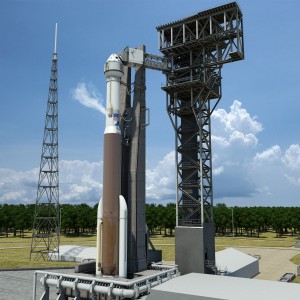 The CST-100 will conduct a pad abort test in early 2017 to show the effectiveness of the spacecraft’s launch abort system or LAS.
The CST-100 will conduct a pad abort test in early 2017 to show the effectiveness of the spacecraft’s launch abort system or LAS.- A flight test completing a full orbital mission profile will be flown in mid-2017, with the CST-100 flying on an Atlas V into space.
- Mid 2017 is also the timeframe for the flight test that will include a Boeing test pilot and an astronaut. The spacecraft will visit the station in a demonstration of the complete crew transportation system.
Inside KSC Features Commercial Crew Event
Watch a short recap of this week’s Commercial Crew Program news in this week’s episode of Inside KSC! Kennedy is the home of the Commercial Crew Program and the launch site of the systems now in development by Boeing and SpaceX that will carry NASA astronauts to the International Space Station in 2017.
Setting Up Future Flights
NASA’s Commercial Crew Program partners laid out their plans Monday for flights tests leading up to operational missions taking astronauts to the International Space Station. Both Boeing and SpaceX anticipate uncrewed flight tests followed by crewed flight tests with at least one NASA astronaut aboard the CST-100 and Crew Dragon spacecraft, respectively. After their systems are certified by NASA, they will begin transporting crews to the station. Because of lead time requirements established by the companies in their proposals, they will receive what is known as Authority to Proceed (ATP) when they have met established development-related criteria, and NASA has determined the need for a mission. The Authority to Proceed marks the start of lead time needed to purchase hardware and process their systems for those missions. Boeing may receive the Authority to Proceed before SpaceX, though that does not necessarily mean that Boeing’s CST-100 will fly before the SpaceX Crew Dragon.
SpaceX Pad Abort Test Article Readied For Flight
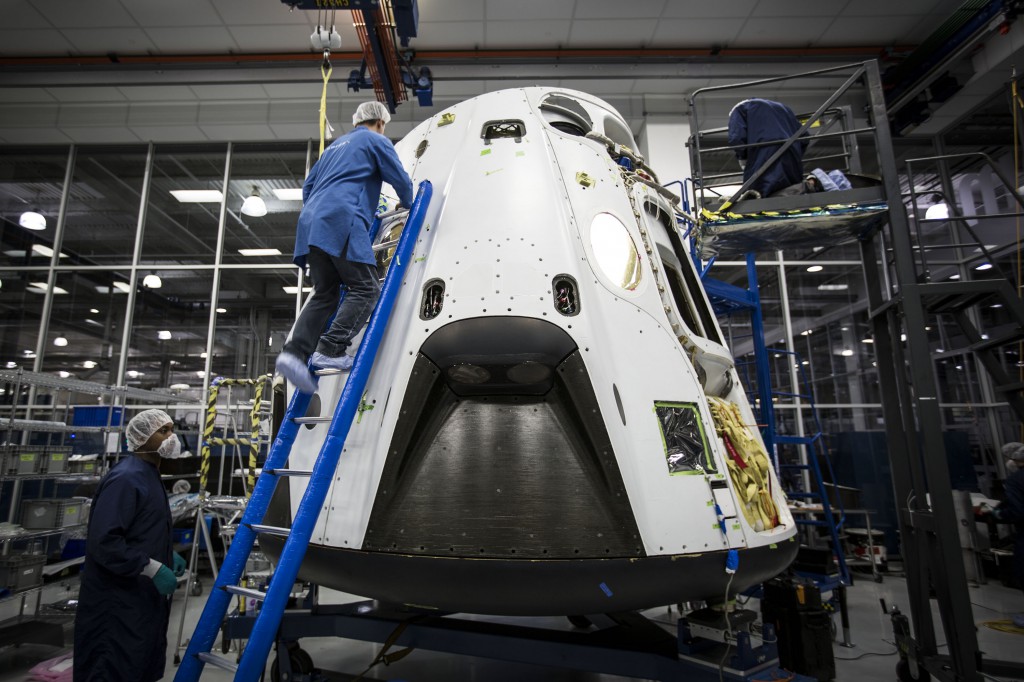 SpaceX is preparing a test version of its Crew Dragon for an upcoming flight that will simulate an emergency abort from the launch pad. The Crew Dragon is designed to carry astronauts to the International Space Station, and the ability to abort from a launch or pad emergency and safely carry crew members out of harm’s way is a critical element for NASA’s next generation of crewed spacecraft. The pad abort test will take place from Cape Canaveral Air Force Station’s Space Launch Complex 40 in under its Commercial Crew Integrated Capability (CCiCap) agreement with NASA, but some data gathered during the development flight will be critical for the company as it continues on the path to certification.
SpaceX is preparing a test version of its Crew Dragon for an upcoming flight that will simulate an emergency abort from the launch pad. The Crew Dragon is designed to carry astronauts to the International Space Station, and the ability to abort from a launch or pad emergency and safely carry crew members out of harm’s way is a critical element for NASA’s next generation of crewed spacecraft. The pad abort test will take place from Cape Canaveral Air Force Station’s Space Launch Complex 40 in under its Commercial Crew Integrated Capability (CCiCap) agreement with NASA, but some data gathered during the development flight will be critical for the company as it continues on the path to certification.
Recap of Today’s Commercial Crew Briefing
 Read our recap of today’s news media briefing with NASA’s administrator, Commercial Crew Program manager and astronaut along with Boeing and SpaceX officials. Not to spoil it, but exciting times are near as everyone works toward launches with crews in 2017.
Read our recap of today’s news media briefing with NASA’s administrator, Commercial Crew Program manager and astronaut along with Boeing and SpaceX officials. Not to spoil it, but exciting times are near as everyone works toward launches with crews in 2017.
NASA, Boeing, SpaceX Outline Path to Flight
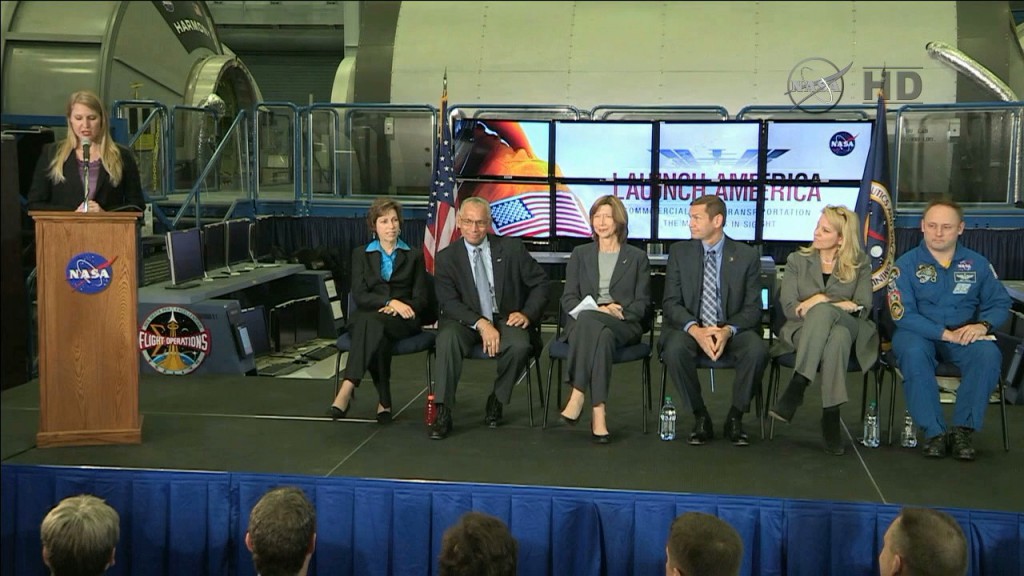
By Steven Siceloff,
NASA’s Kennedy Space Center, Fla.
Spacecraft systems testing followed by increasingly complex flight tests and ultimately astronauts flying orbital flights will pave the way during the next few years to operational missions to the International Space Station that will deliver crews on American vehicles launching from American soil for the first time since 2011.
That is the path forward laid out Monday as two companies and teams of engineers work toward building safe, reliable and cost-effective spacecraft and systems that will take astronauts to the station from American launch complexes.
Boeing’s schedule calls for a pad abort test in February 2017, followed by an uncrewed flight test in April 2017, then a flight with a Boeing test pilot and a NASA astronaut in July 2017.
SpaceX anticipates a pad abort test later this spring as part of the previous development phase, then an uncrewed flight test in late 2016 and a flight test with crew in early 2017.
Speaking for the first time since the awarding of the final development and certification contracts, officials from NASA’s Commercial Crew Program, Boeing and SpaceX revealed some of the details of their plans to cross the chasm from spacecraft and launch system design to flight tests, certification and operational missions to the station.
“It’s an incredible testament to American ingenuity and know-how, and an extraordinary validation of the vision we laid out just a few years ago as we prepared for the long-planned retirement of the space shuttle,” said Charlie Bolden, NASA administrator. “This work is part of a vital strategy to equip our nation with the technologies for the future and inspire a new generation of explorers to take the next giant leap for America.”
Boeing and SpaceX were selected in September 2014 to finalize their respective CST-100 and Crew Dragon spacecraft along with the rockets that will lift them into orbit and all of the ground and mission operations networks essential for safe flights. Both companies have worked with the Commercial Crew Program throughout multiple development phases, continuing to advance their designs before being chosen to complete their systems, reach certification and then fly astronauts to the station.
The goal of NASA’s effort is to provide an American launch vehicle and spacecraft capable of safely carrying astronauts to the station. Unlike other NASA spacecraft, though, this new generation of human-rated vehicles will be designed, built, operated and owned by the companies themselves, not NASA. NASA will buy space transportation services from the companies for astronauts and powered cargo just as the agency does already with the Commercial Resupply Services initiative that uses privately developed and operated rockets and spacecraft to deliver critical cargo to the station.

